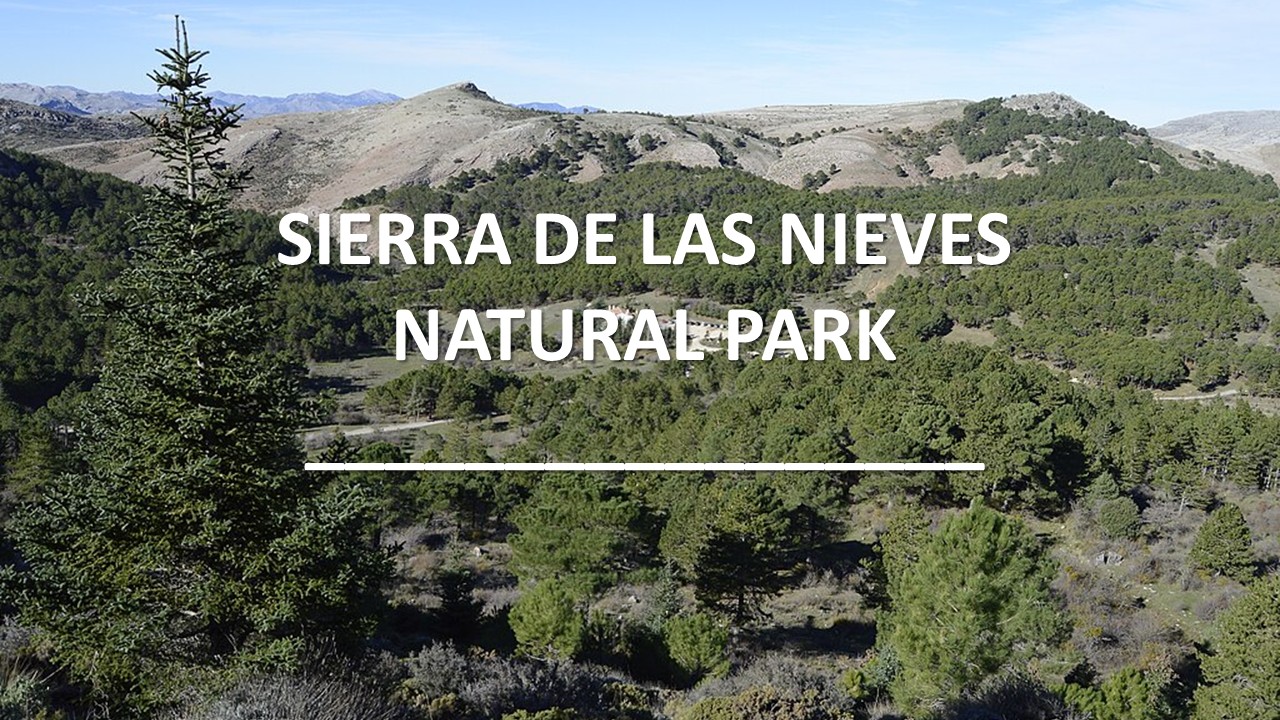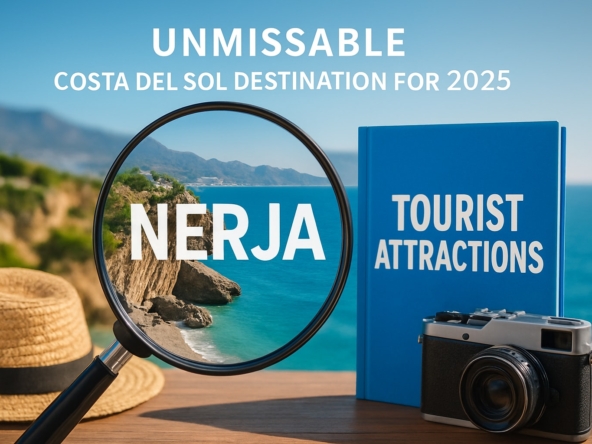Are you ready to experience the untouched beauty of one of Spain’s newest protected gems? Sierra de las Nieves National Park invites you to explore rare Spanish fir forests, dramatic mountain peaks, and picturesque white villages, all just a short drive from the Costa del Sol.
This comprehensive guide covers everything you need for your 2025 adventure. Discover the park’s unique landscapes, fascinating wildlife, and rich local culture. Get practical tips for hiking, wildlife spotting, and immersing yourself in village life.
Whether you are a nature lover, a keen hiker, or simply seeking inspiration for your next journey, let this guide help you plan an unforgettable visit to Sierra de las Nieves National Park.
Sierra de las Nieves National Park at a Glance
Geography, Location, and Access
Sierra de las Nieves National Park is nestled in the heart of Málaga province, Andalusia, just a short drive from the renowned Costa del Sol. Covering approximately 22,979 hectares, its landscape stretches between Ronda and Marbella, making it easily accessible from major cities and airports, especially Málaga Airport.
The park is recognised as a UNESCO Biosphere Reserve, highlighting its ecological significance. Main access points include Ronda, Yunquera, Tolox, Istán, El Burgo, and Monda. Visitors typically enter via Los Quejigales (from Ronda/San Pedro de Alcántara) or Puerto Saucillo (from Yunquera). For official visitor tips and updated access information, consult the Official tourism information.
Coordinates for Sierra de las Nieves National Park are 36°41′00″N 5°00′00″W. Annually, about 100,000 people discover its beauty.
Unique Landscapes and Geological Features
The terrain of Sierra de las Nieves National Park is defined by dramatic mountain peaks, with La Torrecilla standing as the highest at 1,919 metres. The park is also home to the GESM shaft, the deepest vertical cave in Andalusia, plunging over 1,098 metres underground.
Peridotite rock formations, among the rarest in the world, create a striking visual contrast. Visitors will encounter karstic landscapes, including cliffs, sinkholes, and intricate cave systems such as Sima Honda and Cueva de la Tinaja. The region’s numerous aquifers and springs, including the famous Tolox spa, add to its natural allure.
Sierra de las Nieves National Park’s geology supports diverse habitats and offers fascinating opportunities for exploration above and below ground.
Climate and Best Times to Visit
Sierra de las Nieves National Park experiences a Mediterranean mountain climate, with warm summers and mild winters. Higher altitudes may see occasional snowfall, transforming the scenery and offering unique photographic opportunities.
The best times to visit are spring (March to May) and autumn (September to November), when hiking and wildlife watching are most rewarding. Summer brings heat to lower elevations, but temperatures remain comfortable in the mountains. Winter visits reveal snow-capped peaks and peaceful trails.
When planning your trip, consider packing layers, sturdy footwear, sun protection, and sufficient water. Check local weather updates before setting out to make the most of your time in Sierra de las Nieves National Park.
Flora and Fauna: A Naturalist’s Paradise
Sierra de las Nieves National Park is a living showcase of rare and remarkable biodiversity. Its unique combination of Mediterranean and mountain ecosystems creates a haven for nature lovers. Visitors are greeted by pristine forests, colourful wildflowers, and habitats teeming with wildlife. Every season brings new opportunities to discover the park’s natural wonders.
Iconic Plant Life and Forests
The sierra de las nieves national park is home to the planet’s largest Spanish fir (Abies pinsapo) forests, covering about 2,000 hectares. These ancient trees, found only in the mountains of Málaga and Cadiz, are botanical treasures that date back to the Ice Age. Walking through these forests, visitors encounter a tapestry of holm oak, cork oak, and gall oak, each supporting a rich understorey of Mediterranean shrubs.
Over 1,500 plant species thrive here, including rare orchids, vibrant wildflowers, and edible mushrooms. In spring, the slopes burst into colour, while autumn brings a wealth of fungi for keen foragers. The Las Escaleretas natural monument in Parauta is especially famous for its old-growth Spanish firs and diverse flora. The sierra de las nieves national park offers a living classroom for botanists and casual hikers alike.
Wildlife Watching Opportunities
Wildlife enthusiasts will find the sierra de las nieves national park an ideal destination for observation. The mountain goat is the park’s emblem, often seen scaling rocky outcrops. Red deer, wild boar, and foxes roam the woodlands and valleys. Small mammals, such as genets and badgers, add to the area’s diversity.
Birdwatchers can spot more than 150 species, including golden eagles, peregrine falcons, and eagle owls. Rivers and pools shelter native crayfish and blenny, while the park’s caves provide roosts for several bat species. Early mornings and late afternoons are the best times for sightings, especially around water sources and forest clearings.
Conservation and Biodiversity Significance
Sierra de las nieves national park gained national park status in 2021, strengthening protections for its rare habitats and species. The area has been a UNESCO Biosphere Reserve since 1995, highlighting its global ecological value. Conservation programmes focus on preserving endemic plants, safeguarding threatened wildlife, and maintaining the unique geology that shapes the park’s microclimates.
The park’s mosaic of habitats supports climate resilience and vital ecosystem services, such as water filtration and carbon storage. Its protected status ensures that future generations can continue to experience the natural beauty and diversity that define this remarkable region.
Notable Caves and Underground Wonders
Beneath the surface, the sierra de las nieves national park hides some of Europe’s most impressive caves. The GESM shaft plunges over 1,098 metres, making it the deepest vertical cave in Andalusia. Other notable sites include Hoyos del Pilar, Hoyos de Lifa, and the prehistoric Sima de la Tinaja, accessible from Tolox. Caving adventures are possible with proper guidance and safety measures, offering a thrilling perspective on the park’s geological history.
Outdoor Activities and Adventure Routes
Sierra de las Nieves National Park is a true playground for outdoor enthusiasts. Its rugged peaks, ancient forests, and sparkling rivers offer endless opportunities for adventure in every season. Whether you crave challenging hikes, thrilling caving expeditions, or peaceful moments by a mountain stream, this park delivers a wealth of experiences for all skill levels.
Hiking and Walking Trails
Sierra de las Nieves National Park features some of Andalusia’s most iconic hiking routes. The Gran Senda de Málaga (GR 249) is a 942 km long-distance trail, with several scenic stages passing through the park. Popular routes include Charco de la Virgen from Tolox (5 km), the Quejigales–Torrecilla trail (7 km, leading to the park’s highest peak), and Puerto Saucillo–Puerto Bellina, each offering unique landscapes.
Trails are clearly marked, ranging from gentle family-friendly walks to challenging ascents. Look out for panoramic viewpoints, ancient forests, and river crossings along the way. Always check trail conditions before setting out, and remember to carry sufficient water, especially in summer. Exploring sierra de las nieves national park on foot is the perfect way to experience its natural wonders up close.
Trail Comparison Table
| Trail Name | Length | Difficulty | Highlights |
|---|---|---|---|
| Charco de la Virgen | 5 km | Easy | Waterfalls, forests |
| Quejigales–Torrecilla | 7 km | Moderate | Summit views, Spanish firs |
| Puerto Saucillo–Puerto Bellina | 6 km | Moderate | Panoramic vistas, oak woods |
Caving, Climbing, and Adventure Sports
Caving is a signature experience in sierra de las nieves national park, with vertical shafts like the GESM offering a challenge for experienced speleologists. Other caves, such as Sima Honda and Cueva de la Tinaja, reveal a world of underground chambers and geological marvels.
Rock climbers will find excellent routes suitable for various skill levels, while canyoning enthusiasts can explore the park’s dramatic gorges and riverbeds. Horse riding and mountain biking are also popular, with dedicated trails winding through forests and valleys. Several local operators offer guided tours and equipment hire to ensure safety and maximise enjoyment.
Water Activities and Relaxation
The rivers and streams of sierra de las nieves national park come alive in spring and early summer, providing ideal conditions for canoeing and kayaking. Natural pools and waterfalls invite visitors to cool off after a hike, while the renowned Tolox spa offers relaxation with its medicinal mineral waters.
Birdwatchers can enjoy tranquil moments by the park’s rivers and wetlands, spotting species such as kingfishers and herons. Always check seasonal water conditions, as some activities are only possible after rainfall.
Tips for Responsible and Safe Exploration
When adventuring in sierra de las nieves national park, water conservation is critical due to the scarcity of sources, especially in warmer months. Practise leave-no-trace principles: pack out all waste, respect wildlife, and stay on marked trails to protect fragile habitats.
Prepare for changeable weather by carrying appropriate clothing, navigation tools, and a first-aid kit. Familiarise yourself with emergency contacts and park regulations before heading out. For those new to the area or seeking deeper insight, guided tours are widely available and can enhance your visit. For more regional advice, see Tourism tips for Costa del Sol.
Accessibility and Facilities for Visitors
Visitor centres in Yunquera, Tolox, and Ronda provide maps, information, and expert advice for planning your adventure. Most main trailheads and picnic areas offer parking and basic facilities, while some routes are designed for visitors with reduced mobility.
Guided tours can be arranged through local guides, many of whom specialise in accessible experiences. Always check ahead for up-to-date information on facilities and seasonal access.
Discovering the White Villages and Local Culture
Nestled on the edges and within the heart of Sierra de las Nieves National Park, the white villages offer an authentic window into Andalusian culture. Each village boasts its own charm, inviting visitors to step back in time and experience a slower, more traditional way of life.
The 14 White Villages: History and Highlights
The 14 white villages of Sierra de las Nieves National Park include Benahavís, El Burgo, Istán, Monda, Parauta, Ronda, Tolox, Yunquera, Ojén, and others. Their Moorish heritage is evident in the intricate alleyways, whitewashed facades, and terracotta rooftops. Wander cobblestone streets lined with flower-filled balconies and discover historic churches, ancient castles, and panoramic viewpoints.
Annual festivals, such as the chestnut harvest in Yunquera or the lively Semana Santa processions, bring communities together and offer a glimpse into enduring traditions. To deepen your understanding of the region’s unique blend of history and biodiversity, explore this Sierra de las Nieves National Park overview.
Gastronomy and Local Specialities
The culinary scene in Sierra de las Nieves National Park is a celebration of local produce and time-honoured recipes. Savour gazpacho, migas, and chivo lechal, or sample artisan cheeses and chestnuts. Rural tapas bars and restaurants serve honey, olive oil, and mushrooms, complemented by wines from nearby Ronda vineyards.
Artisan Crafts and Rural Life
Artisan traditions thrive in the villages of Sierra de las Nieves National Park. Ceramics, handwoven textiles, and leather goods fill local shops and markets. Many families still rely on olive and almond harvesting, while artisan fairs showcase the skills passed down through generations.
Ethnographic and Agrotourism Routes
Themed routes, such as olive oil, wine, and chestnut trails, provide immersive ways to explore Sierra de las Nieves National Park’s rural heritage. Participate in farm visits, attend rural workshops, or stay on a working finca for a true agrotourism experience. Interacting with local communities offers insight into agricultural cycles and traditional ways of life, making each visit meaningful and memorable.
Photography and Cultural Immersion Tips
Capture the essence of the villages and surrounding landscapes during golden hour from hilltop viewpoints and lively plazas. Join local fiestas and customs for richer experiences, and always engage with village traditions respectfully. These moments form lasting memories of your time in Sierra de las Nieves National Park.
Planning Your Visit: Practical Information for 2025
Getting There and Around
Arriving at sierra de las nieves national park is straightforward, with the nearest major gateway being Málaga Airport. You can find detailed Málaga Airport travel information to help plan your journey. From the airport, car hire is a popular choice, offering flexibility for exploring the park’s villages and trailheads.
Public transport options include bus routes connecting Málaga, Ronda, Yunquera, and Tolox. Parking is available at main entrances and village centres. Roads are generally well maintained, but some mountain routes may have seasonal closures due to weather, so always check local updates before setting off.
Accommodation Options
Visitors to sierra de las nieves national park can choose from a variety of rural hotels, guesthouses, and eco-lodges nestled in white villages. Casas rurales provide cosy, authentic stays, often with scenic views and local hospitality.
Camping is permitted only in designated areas, with several campsites offering basic facilities. Book well in advance during peak seasons, especially in spring and autumn. Many accommodations are family friendly and some cater to guests with reduced mobility, ensuring a comfortable experience for all.
Park Entry, Permits, and Regulations
Entry to sierra de las nieves national park is free, although specific activities like caving may require advance permits. It is essential to follow park rules regarding camping, fires, and respecting wildlife to preserve this unique environment.
Visitors should observe posted codes of conduct and adhere to opening hours. Emergency numbers are displayed at ranger stations and visitor centres, providing support in case of accidents or adverse weather conditions.
Essential Packing List and Preparation
Preparing for your adventure in sierra de las nieves national park means packing for changing conditions. Bring sturdy footwear, layered clothing suited to the season, and a waterproof jacket. Maps, GPS devices, or a reliable navigation app are recommended due to limited mobile signal in remote areas.
Carry plenty of water, snacks, and a small first aid kit. Sun protection, including hats and sunscreen, is crucial, as is insect repellent, especially in warmer months. Thorough preparation ensures a safe and enjoyable visit.
Sustainable and Responsible Travel Tips
Support local businesses by shopping at village markets and dining in rural restaurants. Choose eco-friendly accommodations and guided tours that prioritise conservation. Always minimise your environmental impact by following leave no trace principles and avoiding disturbance to wildlife or habitats.
Consider joining conservation activities or volunteering with park initiatives. Respect local customs and traditions, engaging thoughtfully with the communities that make sierra de las nieves national park so special.
Frequently Asked Questions about Sierra de las Nieves National Park
Curious about Sierra de las Nieves National Park? Here, we answer the most common questions to help you plan a memorable visit and get the most from this remarkable protected area.
What makes Sierra de las Nieves National Park unique among Spain’s national parks?
The park stands out for its vast Spanish fir forests, dramatic mountain scenery, and rare geological formations, making it a hotspot for biodiversity and natural beauty.
When was the park declared a national park, and what does this status mean?
Sierra de las Nieves National Park received its official designation in 2021, which increased its protection and conservation efforts.
Are pets allowed in the park?
Pets are welcome but must be kept on a lead at all times to protect local wildlife and sensitive habitats.
What are the most family-friendly trails?
Trails like Charco de la Virgen and the Puerto Saucillo–Puerto Bellina route offer safe, enjoyable walks suitable for families and beginners.
Can you swim in the park’s rivers or pools?
Swimming is permitted in designated natural pools and river spots, especially near Tolox, but always check local signage and safety advice.
Is the park accessible year-round?
Yes, Sierra de las Nieves National Park is open throughout the year. However, some trails may be inaccessible during heavy rain or snowfall.
Are guided tours available, and in which languages?
Guided tours are offered in Spanish and English, with local guides providing in-depth knowledge of the park’s wildlife, geology, and culture.
What should visitors do in case of emergency?
Contact emergency services (112 in Spain) and notify park rangers at the nearest visitor centre for immediate assistance.
Are drones permitted in the park?
Drones are not allowed without prior authorisation to protect wildlife and ensure visitor safety.
How can visitors support conservation efforts?
Support local initiatives, follow park guidelines, and consider learning more about the park’s ecological value through resources like the Mountain Biosphere Network profile.
Where to find up-to-date weather and trail information?
Visitor centres in Yunquera, Tolox, and Ronda provide real-time updates, maps, and advice on conditions in Sierra de las Nieves National Park.
Tips for visiting during peak and off-peak times?
Arrive early during weekends and holidays to avoid crowds. Off-peak seasons like spring and autumn offer quieter trails and ideal weather.
As you plan your adventure to Sierra de las Nieves National Park, you might find yourself dreaming of making this breathtaking region part of your everyday life. Whether you’re captivated by the white villages, enchanted forests, or mountain trails, finding the perfect home nearby could be your next great discovery. If you’d like a hand navigating your options or have questions about living close to these natural wonders, let us help you in your search. We’re here to guide you every step of the way so you can experience the Costa del Sol at its best.



